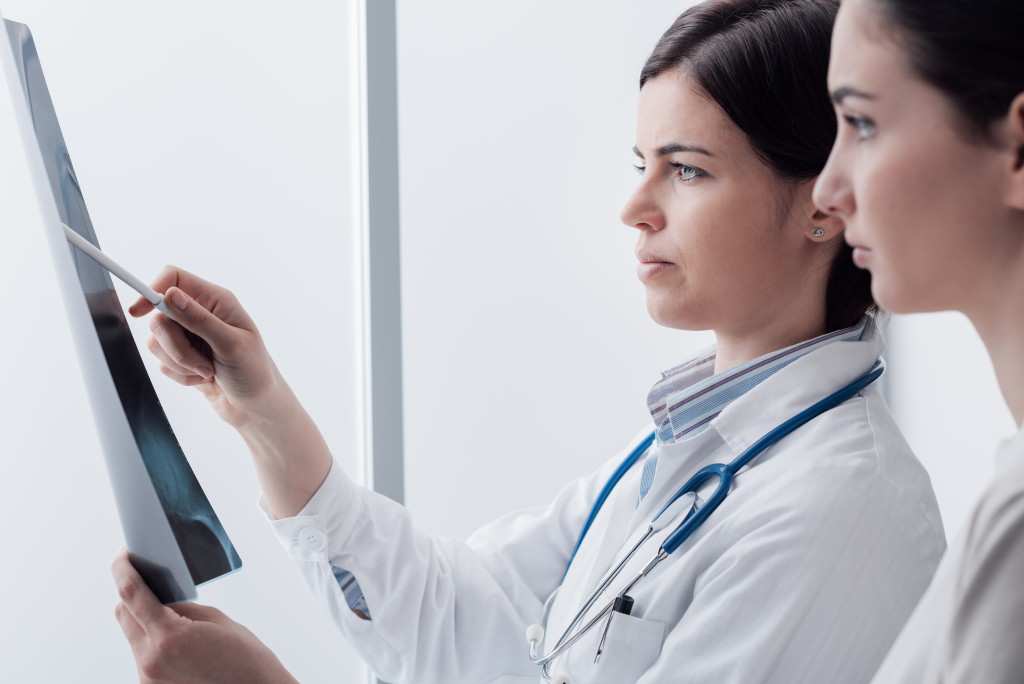- Epidermal sensors are tiny, skin-embedded sensors that help doctors monitor patients’ vital signs with greater ease and independence.
- Robotic limb prosthetics provide users with increased mobility, a sense of freedom from physical limitations, and customizable aesthetics.
- Restorative and aesthetic dentistry helps restore smiles and confidence by providing procedures such as dental implants, crowns and bridges, inlays and onlays, and veneers.
- Telehealth services offer a convenient way for patients to access healthcare professionals quickly without requiring an office visit.
- Virtual reality rehabilitation can help people practice everyday tasks in a controlled environment.
Feeling confident in yourself and your body can be a challenge, especially with conditions like chronic pain or disabilities. Fortunately, the medical field has made a number of advances in recent years that have helped many people increase their confidence and lead more comfortable lives. Here are some medical innovations that have been helping people gain more confidence in life.
Epidermal Sensors
Epidermal sensors are tiny sensors that are embedded directly into the skin. They allow doctors to monitor patients’ vital signs without having to take frequent trips to the hospital.
The sensors can detect heart rate, temperature, blood pressure, respiration rate, and other important biomarkers. These devices provide patients with greater independence and peace of mind by allowing them to easily track their vital signs themselves.
Additionally, they may help reduce anxiety related to going through medical procedures as they provide an alternative way for doctors to stay connected with their patients’ health data without requiring an invasive procedure every time it needs to be monitored.
Robotic Limb Prosthetics
Robotic limb prosthetics are robotic arms and legs that use sophisticated technology to mimic the movements of lost limbs. They can be used for activities such as typing on a computer keyboard or performing manual tasks like carrying groceries or using tools.
Robotic prosthetics provide users with increased mobility and a sense of freedom from being confined by their physical limitations. This, in turn, helps improve self-confidence by providing them with greater control over their environment.
Additionally, robotic prosthetics have been designed with aesthetics in mind. Some models even come with customizable colors so users can choose the look that best reflects their personal style.

Restorative and Aesthetic Dentistry
Restorative and aesthetic dentistry refers to a range of procedures that improve the appearance and functionality of teeth. These treatments can help restore a person’s smile, which in turn helps boost their self-esteem. This includes procedures like:
Dental Implants
Dental implants are natural-looking replacement tooth roots that provide a strong foundation for individual dental prostheses like crowns, bridges, and dentures. They can help restore the full function of missing teeth as well as improve the appearance of smiles.
Crowns and Bridges
Crowns and bridges are artificial teeth that are used to replace missing teeth or hold existing teeth together. These restorations provide a natural-looking solution for people who have lost some or all of their natural teeth.
Inlays and Onlays
Inlays and onlays are indirect restorations that are made of a material such as porcelain or composite resin. They are used to restore teeth that have been damaged by decay, injury, or wear and tear.
Veneers
Veneers are basically thin shells composed of either porcelain or composite resin. They are custom-made to fit over the front surface of a person’s teeth. They can help improve the appearance of teeth, particularly those that have chips or discoloration.
Telehealth
Telehealth is the practice of providing healthcare services remotely via telephone or video conferencing tools. Telehealth allows patients to receive care from home, which reduces stress associated with traveling long distances for appointments while still getting quality care from an experienced provider.
It also reduces wait time since there is no need to wait for an appointment slot—patients can connect with providers almost immediately. For instance, a doctor can order tests, prescribe medications, and answer questions about symptoms or treatments, all from the comfort of the patient’s home.
Telehealth helps build confidence by giving individuals access to healthcare services quickly and conveniently when they need it most—something many would otherwise not have access to due to distance or financial constraints. In addition, it provides a sense of security since patients can have their questions answered more quickly and accurately than ever before.

Virtual Reality Rehabilitation
Virtual reality rehabilitation is a type of therapy that uses immersive virtual environments to help people recover from physical and cognitive impairments. It can allow someone with impaired mobility to practice their motor skills in a safe, controlled environment without any risk of further damage or injury.
VR rehabilitation has been used to help individuals regain confidence by giving them a chance to practice everyday tasks like walking or climbing stairs in a virtual environment. This can help reduce the fear and anxiety of performing these activities in the real world.
In some cases, virtual reality can even be used to provide therapeutic treatments for a variety of conditions, such as anxiety, depression, and post-traumatic stress disorder. By immersing someone in a relaxing environment, they can learn relaxation techniques that help reduce stress and improve confidence.
Medical advances continue to make life easier for many people who face various conditions or disabilities every day. From robotic limb prosthetics for those who’ve lost a limb to epidermal sensors for monitoring vital signs remotely, restorative and aesthetic dentistry for spruced-up smiles, and telehealth services for quick access to healthcare professionals—these innovations help individuals feel more independent and confident about themselves regardless of their circumstances. They also provide hope that further advancements will continue making life better each day.




